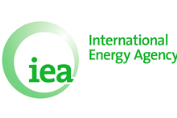IEA World Energy Outlook
Energy markets in 2012, like the broader economic picture, are marked by significant uncertainty. From a policy perspective, global macroeconomic concerns in 2011 diverted attention away from energy policy and could do the same this year. That could have worrying impacts on policy progress, especially as recent months have ushered in record carbon dioxide emissions, worsening energy efficiency and sustained high oil prices. In times of economic uncertainty, one aspect of energy policy remains a priority: energy security. That is the case both for economies trying to stave off recession and for those whose rapid growth demands increasing energy inputs. Recent events such as the civil unrest in North Africa and the Middle East as well as the incident at the Fukushima Daiichi nuclear power plant have further heightened concerns, as was apparent at the October 2011 ministerial meeting of the International Energy Agency (IEA) in Paris. Energy ministers from the 28 IEA member countries, 7 partner countries (Brazil, China, India, Indonesia, Mexico, Russia and South Africa) and 2 accession countries (Chile and Estonia) gathered at that meeting to address today’s most pressing energy policy issues. Energy security topped their agenda. With most economic and energy demand growth taking place in emerging markets where energy poverty remains a key concern, improving energy access has become a major priority for some of the biggest and increasingly important energy players. The high-level turnout in Oslo at a major conference on the topic, also in October 2011, was testament to the growing concern around energy access, and a special excerpt of the 2011 World Energy Outlook (WEO) released there highlights the challenge. Investments of US$40 billion per year, about five times that of 2009, will be required to extend modern energy access to all by 2030. In the oil market, demand—driven by non-OECD economies— continues to grow, leading to declining oil stocks that could underpin stubbornly high prices in 2012.
Demand estimates for 2012 are shrouded in economic uncertainty, and some outstanding supply risks remain, such as the timing of the restoration of full Libyan oil production. Tight oil markets do not respond well to even small shocks, so 2012 may turn out to be bumpy.
But the biggest worry is that such uncertainties, together with altered government spending priorities, will discourage or delay near-term investments which are so crucial to meeting rising energy demand over the medium and longer term. The 2011 WEO includes a deferred investment case in the Middle East and North Africa which looks at the implications of one third less investment in 2012 with a gradual return to normal over several years. The projected result is an oil price spike to $150 per barrel or higher five years down the line. Looking at gas, transit issues on Europe’s periphery continue to loom large. And in the wider global market, liquefied natural gas supply growth is likely to fall off in 2012, leading to a significant tightening in that market. In the US, however, the ongoing shale-gas revolution is likely to continue as a game-changer in the short term. There is no doubt that gas will play an important role in the energy mix in the coming decades, and there is good reason to believe that we are entering a “Golden Age of Gas”. Still, environmental or other concerns could derail the shale gas revolution in the US and other countries. Golden rules and high industry standards will help ensure that the Golden Age endures. Uncertainties around “game-changers” in the power market go beyond gas; the share of coal-fired power in China, and also the growth of renewable energy, will depend on both strong policy commitment and technological developments over the coming years. Power markets in Europe on the other hand will have to handle the impacts of the German nuclear moratorium imposed after Fukushima. In normal circumstances the electricity capacity balance should be able to cope, but a cold windless winter could push the limits. And consumers will most likely pay higher prices for their power. We also expect that fossil fuel consumption and CO2 emissions will increase. These short-term uncertainties do not bode well for climate change mitigation, underscoring the need for bold policy action.
The year 2012 is the last year of the Kyoto Protocol’s first commitment period. Countries and industry in Kyoto countries will have to finalise their plans to comply with their emission goals, and carbon markets are one option to ensure compliance. Budding exchanges, for example in Australia and by mid-decade possibly in China, are a good sign that Europe will be joined by significant economies—and emitters. But carbon markets are also subject to the wider economic turmoil, and the carbon price must be sufficient to affect major investment decisions. Nevertheless, carbon pricing, in various forms, will be key to promoting energy efficiency as well as new technologies. These and other incentives, such as flexible feed-in tariffs, will require significant political will in an environment of such uncertainty. The door is closing to achieving climate change goals which limit temperature increases to 2°C, and on our current path by 2017 we will have “locked in” the energy sector’s carbon allowance. To stay on the 2°C path, all subsequent energy investment would have to be carbon neutral. The 2011 WEO also shows that delaying action is a false economy: for every $1 of investment in cleaner technology that is avoided in the power sector before 2020, an additional $4.30 would need to be spent after 2020 to compensate for the increased emissions. The sooner we get going, the easier and cheaper our task will be; 2012 will therefore be a crucial year.

